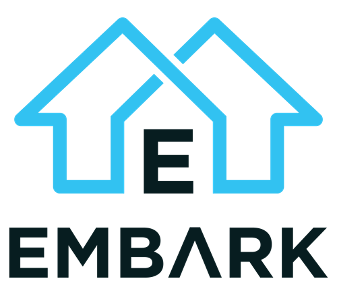Distressed properties in the wake of COVID-19 may open a new level in the engagement of expertise for adaptive reuse projects.

Atlanta, United States – August 31, 2021 /MarketersMedia/ —
Brian Dillman is an architect at DILLMANSTUDIO who specializes in multi-family apartments/mixed-use and adaptive reuse Architecture and Design in Atlanta, Georgia. His appreciation to repurpose old buildings started while he was in college and living in a large urban historic district at the Savannah College of Art and Design. Brian has a wide range of expertise in design experience, design management, and technical realization. From working on museum exhibitions at the Museum of Modern Art in New York to architecture firms and to now developing his own firm, Brian is a well-rounded architect who prides himself on being able to guide his clients through every step of the design process. Today he shares how adaptive reuse is making an impact in the architecture industry.
What is adaptive reuse and how does it promote sustainability?
Brian Dillman: In architecture, it simply means modifying an existing building to serve a new or adapted purpose. As protecting the environment becomes more of a shared value in burgeoning metropolitan areas, adaptive reuse serves as a viable option to reign in uncontrolled urban growth. Adaptive reuse projects are desired by clients to preserve the character of old historic buildings and buildings of the recent past alike while transforming them for unique contemporary experiences. Adaptive reuse brings back life to old buildings, promotes “using less”, preserves empty land, and creates new beacons in communities.
Our team is adapting a property that had 3 existing walls between two buildings into a multi-family mixed-use condominium for Ty Pennington, star of the television show Ty Breaker on HGTV. One of the architectural details we are preserving are the molded Otis medallions on the facade that faces the street, you just cannot replicate the charm of details like these anymore. Also, the bedrooms will have the original exposed brick. Ty is an ideal client given he has a particularly good design eye, so we are pleased with the way the aesthetics are shaping up in no small part to his input, direction, and vision.
Lessons on sustainable design can be learned through an urban setting lens. Industrial areas adjacent to most downtowns (where I live and practice Architecture from) are now desired locations for entrepreneurs. The expense to repurpose property can be less costly than acquiring a site and creating a new development, especially in the current tight labor market and the high materials costs cycle we find ourselves in today. In the revitalization of metropolitan areas, repurposed buildings can be key to promote community and give an area personality often serving as a catalyst for more redevelopment.
Existing components of the building, such as exterior walls, are reused without the need to source a large amount of new material requiring energy to transport, store, etc. Also, you are developing on previously developed land which theoretically spares virgin land. In most urban settings mass transit is convenient; therefore, car use (which scientists believe contribute to over 50% of carbon emissions) is disincentivized reducing dependence on cars. Adaptive reuse projects can range from existing warehouses converted to apartments, to an old restaurant space that needs to take over neighboring space to expand their business and beyond. Adapting to a multi-family project type by nature exhibits sustainable attributes by ways of multi-tenants sharing walls, roofs, and building systems. It is important to keep in mind that the new portions of an adaptive build-out are often comprised of the following building components or materials and serves as initiatives towards “greening” the buildings:
• Low flow plumbing fixtures in bathrooms.
• Low E glazing exterior windows.
• Energy efficient use of lighting.
• Recycled content and recyclable material in exterior envelope, brick, metal stud, gypsum board, and interior finishes.
How is the Architecture Engineering Contractor Industry evolving?
Brian Dillman: The retirement of industry veterans on the development and construction side of the fence is yielding a knowledge gap. Architects are relied upon to fill the void providing new opportunities for expansion of services in pre-design and contract administration.
How has technology influenced design and construction?
Brian Dillman: In 2021, Architects collaborate across time zones in real time, automate business operations, and leverage software to iterate a bounty of design options more efficiently than just a couple of years ago. This allows Architects to focus on design and delivery of services where an impression with clients is made. With technology underpinning professional expertise, giving rise to 3D parametric building modeling, lean or modular construction, and resilient design, these new practices are more efficient and less costly without compromising design quality
Why did you decide to pursue this avenue of architecture?
Brian Dillman: Inspiration dates to my days as an architecture student at the Savannah College of Art and Design and my time at Museum of Modern Art in New York working on exhibitions. That is where I was first exposed to repurposing buildings or just simply transforming interior space. When I traveled to Europe, I fell in love with the beauty of the historical architecture there and the embrace for the old in a new way. After working for some of the world’s top architectural design firms, I developed my own philosophy towards the business of design, I realized that it was time for me to become my own boss. I found my sweet spot when I founded my company, DILLMANSTUDIO, being able to exercise all my capabilities and pursue my passion.
Brian has worked in most major metropolitan areas across the nation and has international experience providing design services for adaptive reuse as well as new construction and it is only the beginning. With projects on the boards and under construction, DILLMANSTUDIO continually strives to assist clients realize their ambitions in the “architectural design space” with inspiring adaptive reuse and sustainable design through new efficient and less costly practices without compromising the power of design. To learn more about working with Brian Dillman visit www.bdillmanarch.com.
Contact Info:
Name: Brian Dillman
Email: Send Email
Organization: DILLMANSTUDIO
Address: 161 Mangum Street SW STE 203 | Atlanta, GA 30313
Phone: 404-964-4326
Website: https://www.bdillmanarch.com
Video URL: https://www.bdillmanarch.com/client-educational-video%20
Source URL: https://marketersmedia.com/adaptive-reuse-architecture-in-american-cities-and-the-sustainability-family-tree-with-architect-brian-dillman-aia-leed-ap/89043874
Source: MarketersMedia
Release ID: 89043874






